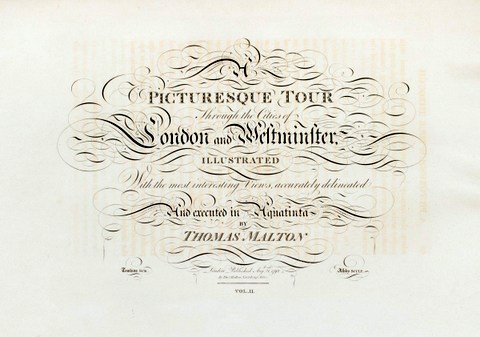ASHBY, Harry
Harry Ashby was baptised at Wotton under Edge, Gloucestershire on 8 April 1744, second son of Robert Ashbee (c.1716–c.1799) and his wife, Sarah née Gardiner (born c.1715). Harry was apprenticed to a Wotton clockmaker who also engraved dial-plates, spoons, and tankards and Harry displayed an unusual aptitude for writing engraving and subsequently worked for Thomas Jefferys (c.1719-1771), geographer, of Charing Cross, engraving titles for maps. He later worked for a Jefferys's former apprentice, John Spilsbury (1739-1769), writing-engraver and inventor of the jigsaw puzzle, at 30 Russell Court, Drury Lane, London. Spilsbury died in 1769 and about 1772, Ashby married his widow, Sarah Spilsbury, née May (1732-1802) and had two sons Robert, born 1774 and Harry, born 1778. Ashby took over Spilbury's engraving business, disposing of the jigsaw section. By 1785, when Ashby joined the Musicians' Company, he and his family had moved to 83 Holborn Bridge and by 1788 to 5 King Street, Cheapside where he was in partnership with his son Robert. Apart from engraving maps, including London, Bath, and the Isle of Man, Ashby's main employment was engraving notes for the emerging banks at home and abroad and in this he showed unusual skill and ingenuity and many of his bank notes and plates are now at the British Museum. He engraved the plates for Richard Langford's 'Beauties of Penmanship' (1785), John Hodgkin's 'Specimens of Greek Penmanship' (1804), and H. Genery's 'Geographical and Commercial Copies' (1805). His wife Sarah died in 1802 and on 16 April 1805 Ashby married secondly at St Matthew's, Bethnal Green, London, Phoebe Everett (1754-1822). Harry Ashby lived in retirement at Exning, near Newmarket in Suffolk, where he died on 31 August 1818, and was buried in Exning churchyard on 6 September 1818.
Works by This Artist

|
A picturesque tour through the cities of London & WestminsterTitle page
|